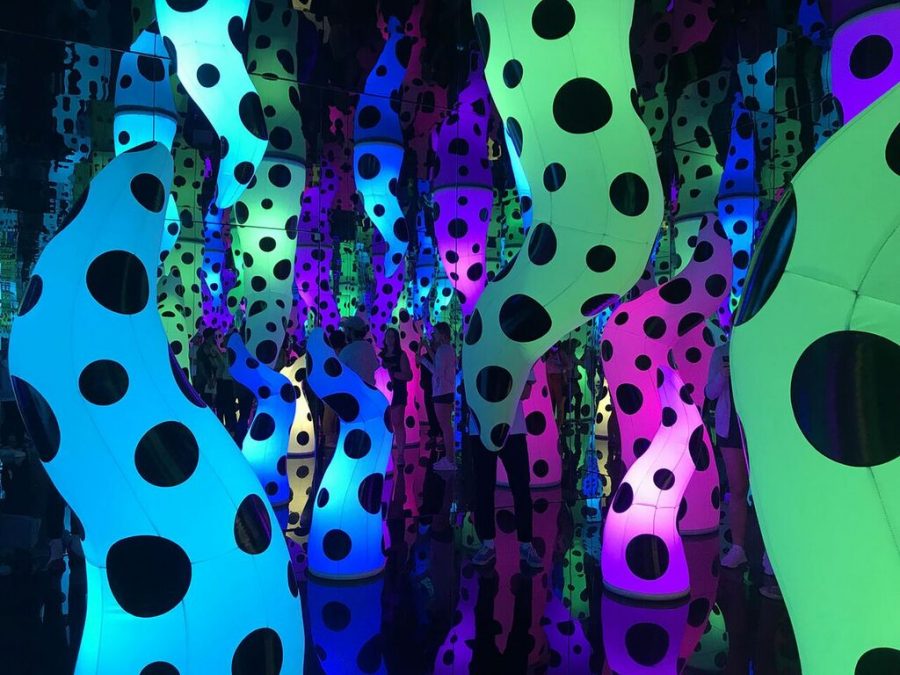Tampa art exhibit stuns viewers
With neon lights glowing, viewers gaze at the interactive exhibit around them. In the Infinity Room, visitors were able to take in the art created by Yayoi Kusama which is available until February.
The new “Love is Calling” interactive exhibit at the Tampa Museum of Art, created and envisioned by Japanese artist Yayoi Kusama, has received tons of attention from students and has become a hot spot for people interested in art.
The art is one of Kusama’s well-known Infinity Rooms and will be on display until Feb. 14.
After waiting in a queue, viewers are sent into the exhibit for about three minutes, but as the room isn’t large, that is plenty of time to fully take in the visual aspects of Kusama’s creation.
The first thing that is noticeable are the glowing tentacle-like figures that appear to be coming out of the floor and ceiling. They are an array of neon colors that shift every couple of seconds, cascading from one color to the next.
The walls are mirrored, leading to the appearance that the room is larger than it is in reality and making the tentacles look more plentiful. This illusion of space was intentional, reflecting the infinity of life and the expanse of the universe.
The polka dots covering the tentacles are much more than decoration. They represent the relationship between people and the universe.
“With just one polka dot, nothing can be achieved,” Kusama said. “In the universe, there is the sun, the moon, the earth and hundreds of millions of stars. All of us live in the unfathomable mystery and infinitude of the universe. Pursuing ‘philosophy of the universe’ through art under such circumstances has led me to what I call ‘stereotypical repetition.’”
While the polka dots and colors along with the mirrored walls are meant to show the concept of infinity in a physical form usually unknown to humans, the poem recited in Japanese also provides a narrative to the exhibit.
In the room, as you look around at the visually stimulating aspects, in the background you will hear Kusama herself speaking softly, and once you exit, you’re able to read the English translation of it.
The poem is called “Residing in a Casle of Shed Tears,” and has multiple themes, all following the similar concepts of love and morality.
The poem can be interpreted differently based on personal experience, but a common idea is that it reflects on a fear of death and the realization of how loss affects the love one is able to give.
After seeing this exhibit, I was able to better understand what all the hype was about. Although it is pretty and interesting to look at, opening your mind to the small details and deeper meaning of the exhibit allows for a completely different experience.
I would recommend this to anyone remotely interested in art and even to anyone who wants to learn about poetry or just see something cool that is widely respected in the art world.

